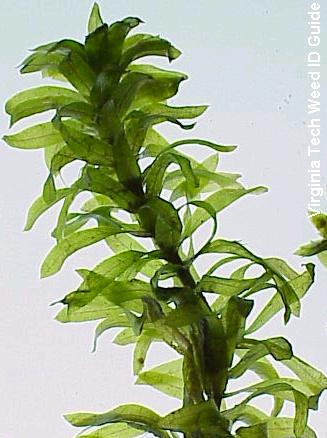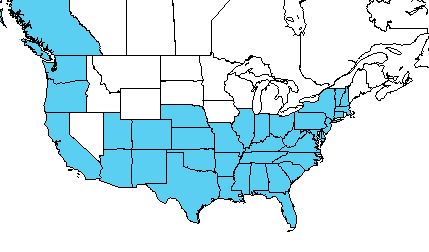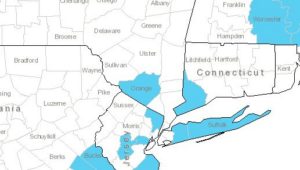Brazilian elodea (Egeria densa) is an aquatic invasive plant happy to grow in a wide range of habitats, and its rapid growth makes it a danger to native ecosystems.
Description
- Egeria densa is a very leafy aggressive non-native invasive aquatic plant. E. densa is a perennial monocot originally from South America.
- E. densa is usually very buoyant and combines dense bottom cover with thick surface tangles.
- The strap-shaped leaves are bright green, 1” long and ¼” wide, and the tips end in a point. The leaf margins have small serrations that can be seen with a hand lenses, but no teeth are present on the lower midrib of the leaf. Leaves are arranged in whorls of 4-8, most often in whorls of 4.
- The dense stems are bright green with branches sprouting from double nodes on the stem.
- E. densa has small white flowers with 3 petals on a stalk that can extend 1” above the water surface.
- Seed germination has not been reported in the United States, and no tubers are produced. The lack of tubers helps differentiate it from hydrilla, another feared invasive plant.
- The main method of reproduction is by fragmentation, which E. densa does easily and successfully.
Impacts and Threats Posed by Brazilian Elodea
- E. densa is a highly competitive plant that is capable of rapid growth and spread. E. densa can displace native species, reduce biodiversity, limit recreation, diminish aesthetic value, and decrease water quality and flow.
- Once established, E. densa can form thick unsightly mats on the water’s surface and slow water flow. The mats formed can hamper fishing, boating, swimming and other activities, and the loss of recreational and aesthetic value can cause a decline in surrounding lake property value.
- E. densa may exclude native plants and form dense single species stands that do not provide supportive habitat or food for native wildlife. These native wildlife populations may be forced to relocate or perish, resulting in a loss of biodiversity and a disruption in the balance of the ecosystem.
- When the large stands of E. densa die, their decomposition can create anoxic (low oxygen) conditions in the water, which may result in fish kills.
- Dense stands of E. densa trap sediments, increasing organic and inorganic sediment levels.


